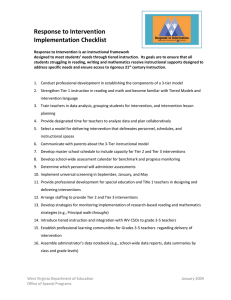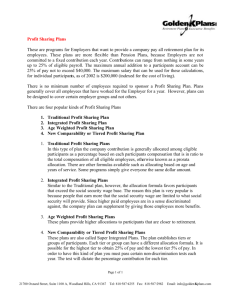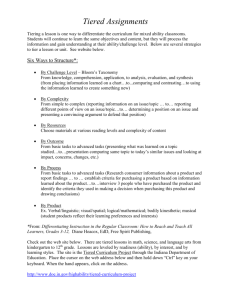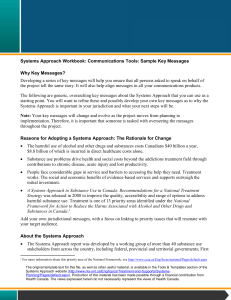Tiered Assignments: Differentiated Instruction Strategies
advertisement
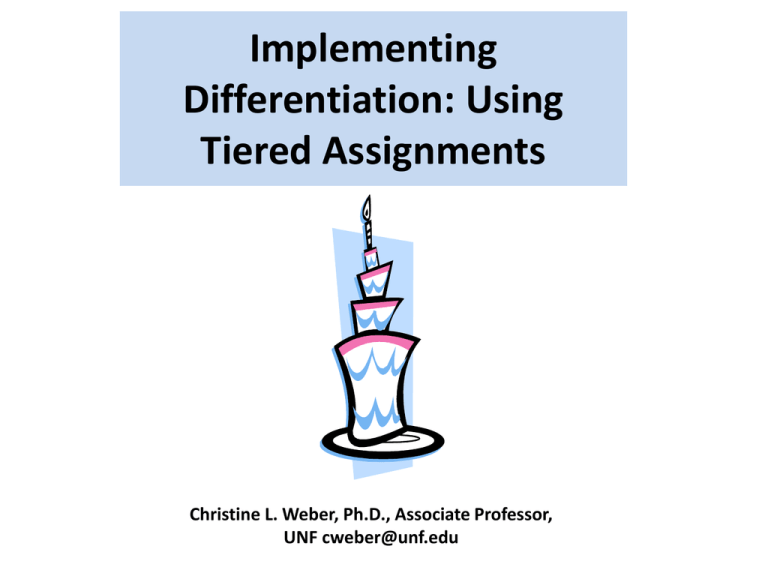
Implementing Differentiation: Using Tiered Assignments Christine L. Weber, Ph.D., Associate Professor, UNF cweber@unf.edu 1 Objectives for the Workshop • Teachers share strategies for enhancing depth and complexity in the classroom • Introduce tiered assignments and complete activities. • Implement tiered strategies in a lesson or unit (working session). • Q&A time 2 Examining Capsules of Tiered Activities Look at several examples of tiered lessons. – How would you define or describe tiering? – How are tiered assignments alike in intent and structure? – What do you see as essential features tiered assignments? 3 Teachers Can Differentiate Content Process Product According to Students’ Readiness Interest Learning Profile Adapted from The Differentiated Classroom: Responding to the Needs of All Learners (Tomlinson, 19 4 OPTIONS FOR DIFFERENTIATION OF INSTRUCTION To Differentiate Instruction By Readiness To Differentiate Instruction By Interest To Differentiate Instruction by Learning Profile ٭equalizer adjustments (complexity, openendedness, etc. ٭add or remove scaffolding ٭vary difficulty level of text & supplementary materials ٭adjust task familiarity ٭vary direct instruction by small group ٭adjust proximity of ideas to student experience ٭encourage application of broad concepts & principles to student interest areas ٭give choice of mode of expressing learning ٭use interest-based mentoring of adults or more expert-like peers ٭give choice of tasks and products (including student designed options) ٭give broad access to varied materials & technologies ٭create an environment with flexible learning spaces and options ٭allow working alone or working with peers ٭use part-to-whole and whole-to-part approaches ٭Vary teacher mode of presentation (visual, auditory, kinesthetic, concrete, abstract) ٭adjust for gender, culture, language differences. useful instructional strategies: - tiered activities - Tiered products - compacting - learning contracts - tiered tasks/alternative forms of assessment useful instructional strategies: - interest centers - interest groups - enrichment clusters - group investigation - choice boards - MI options - internet mentors useful instructional strategies: - multi-ability cooperative tasks - MI options - Triarchic options - 4-MAT CA Tomlinson, UVa ‘97 Time to Eat • View video tape on “Time to Eat.” • Use the chart to identify-– What do you see the teacher doing? – What do you see the students doing? A DIFFERENTIATED CLASSROOM – What do you see the teacher doing? What do you see the students doing? CONTENT (what is taught) Simple vs. complex; small leap vs. great leap; concrete vs. abstract PROCESS (how it is taught) e.g., critical thinking; creative thinking; problem solving; decision making PRODUCT/PERFORMANCE (tangible evidence) various levels; aligns with objective; used for assessment Readiness, Interest, Learning Profile Flexible grouping; more independence vs. less; more structure vs. less; readiness; interests; responding to student needs Tiered Assignments (Lessons , Objectives, Activities, Assessments) • Tiered assignments are a differentiation strategy where learning tasks and projects are developed based on assessed student need. • Tiered assignments are intended to provide a better instructional match between students and their needs. 8 Students arrive with varied • Cultural and linguistic backgrounds Teachers vary • Learning opportunities and experiences TASK for different levels • Interests PRODUCT appropriately to demonstrate learning • Readiness levels LEARNING ENVIRONMENT PROCESS for different levels 9 There are multiple methods for designing Tiered Assignments Tier by…. • Challenge level (Depth) • Complexity • Resources • Outcome • Process • Product 10 Grade K Counting /Math Center Tier 1 Find a way to count and show how many people are in our class. Tier 2 Find a way to show how many people are in our class. How many are absent today? How many are here today? How do you know? Tier 3 Find a way to show how many boys are in our class . How many boys are absent? How many girls are here today? How many girls are absent today? Prove you are correct. Grade K Patterns -Scientists classify by patterns Tier 1 Classify leaves • by size • by color Teacher provides a grid with categories. Tier 2 Classify leaves • by shape • create a category Teacher shows a sample grid and students create own. Tier 3 Find 3 ways each leaf could be classified other than color. Students decide how to show categories. 11 Example of an Elementary tiered assignment Explain why plants and animals reproduce their own kind. • Tier 1: Observe and show structures of an insect larva and of an insect adult (mealworm, wax worm, milkweed bug, silkworm or butterfly). • Tier 2: Show the life cycle of a wax worm (mealworm, milkweed bug, silkworm or butterfly). • Tier 3: Compare the stages of the life cycle of a wax worm to the life cycle of another insect. 12 Example of a Middle School tiered assignment Describe and explain the structures, functions, processes and relationships within organisms in terms of cells, tissues, organs and organ systems. Tier 1: Describe The characteristics of Mammals. Tier 2: Compare the characteristics of mammals with those of another class of animal. Tier 3: How does the environment influence the expression (appearance) of mammalian characteristics? 13 Caution: • Be sure that the tasks you design are truly more advanced and not simply MORE work. 14 Differentiation Activity Your task is to take the following instructional objective and identify two differentiation strategies that might be used to teach the objective. Objective: Students will complete a report on the book Charlotte’s Web or one appropriate for your grade level or choose another objective for your grade level/subject area. Identify the pros and cons of using both strategies in a class of 25 students that includes these 5 students: Sherry likes to be asked to do things by the teacher. She is interested in fitting in and speaks out often in class. She has a wild imagination and loves to read, but her comprehension skills are below grade level. Jimmy is hyperactive and likes to dance around the room when class is near the end. He is an audio/visual learner, is a solid reader, and enjoys excelling and being the “best.” He gets very excited to start new books, but they don’t hold his attention for long. Terrance does not feel a connection to school. He is a very intelligent student, but he “follows.” He seems to do well in every type of activity when he applies himself. He has exhibited strong reading skills, but does not always complete work. Jack failed reading three times. He is an expert hunter and fisherman and knows more about the outdoors than anyone. He seems to learn best with hands-on activities. His reading and writing skills have only slightly improved over the last 2 years. Marie is a very quick learner. She seems to get things just by listening. She likes to excel. She is very concerned about rules and right vs. wrong. She is a natural 15 leader. Her reading and writing skills are both above grade level. “In the end, all learners need your energy, your heart, and your mind. They have that in common because they are young humans. How they need you, however, differs. Unless we understand and respond to those differences, we fail many learners.” 16 Implementing Differentiation Activity • Working from a lesson plan or unit plan, implement tiered assignments • Q &A time • Complete exit card 17
